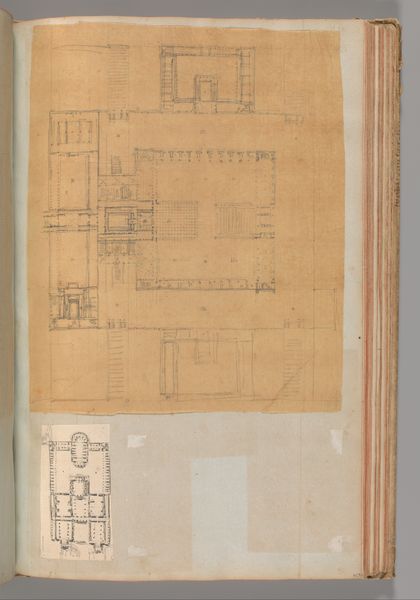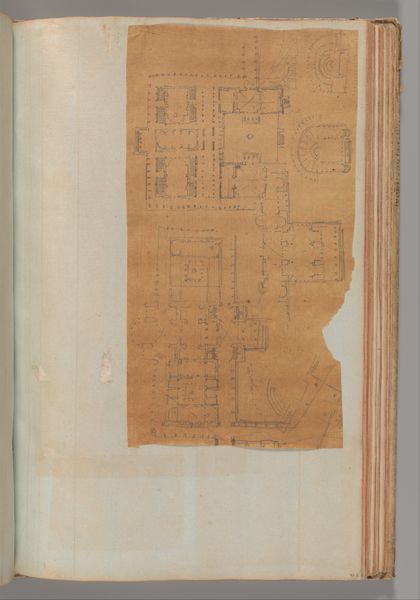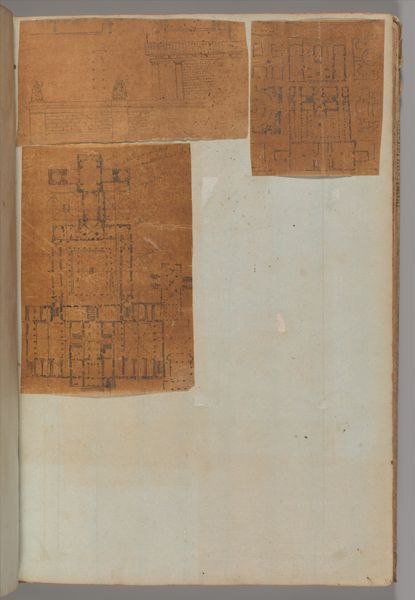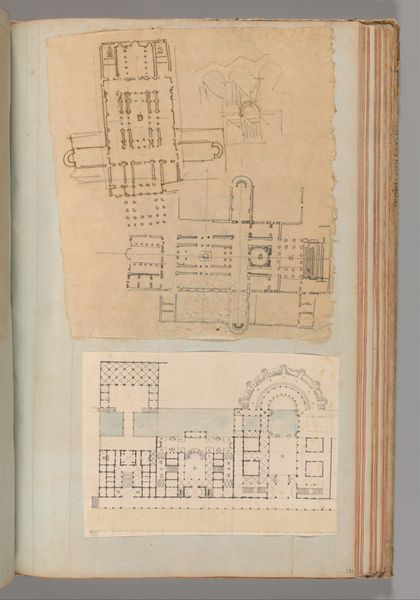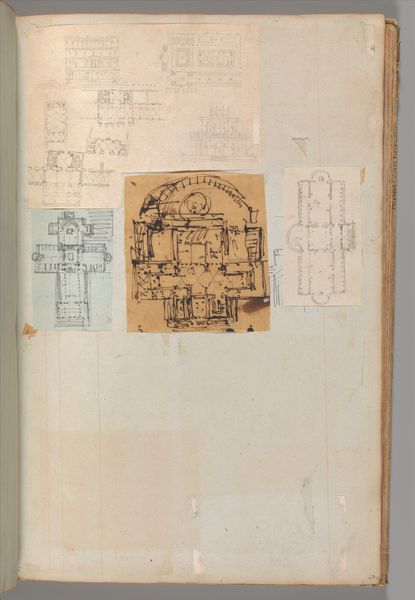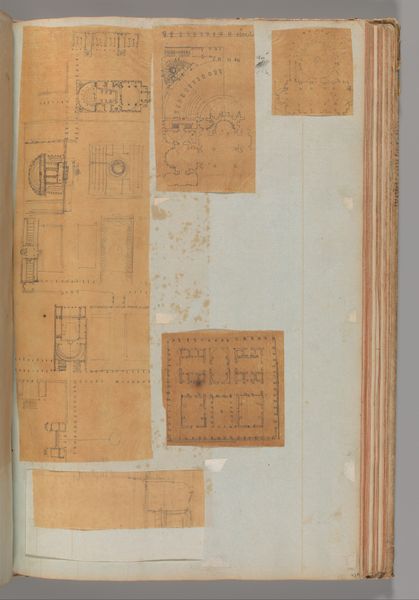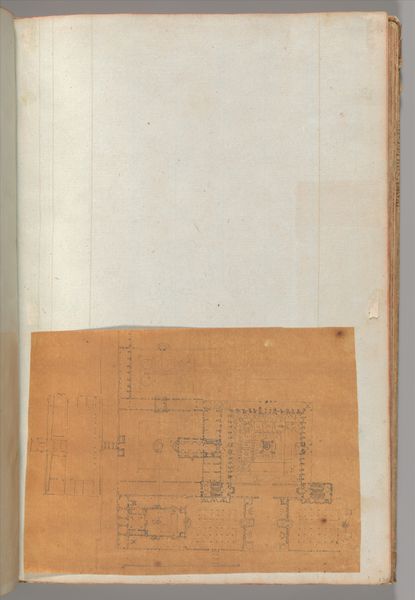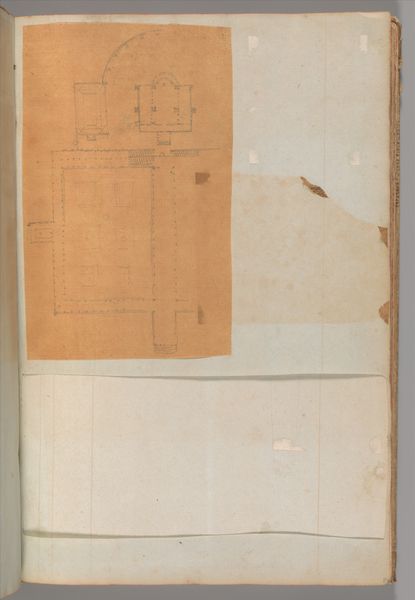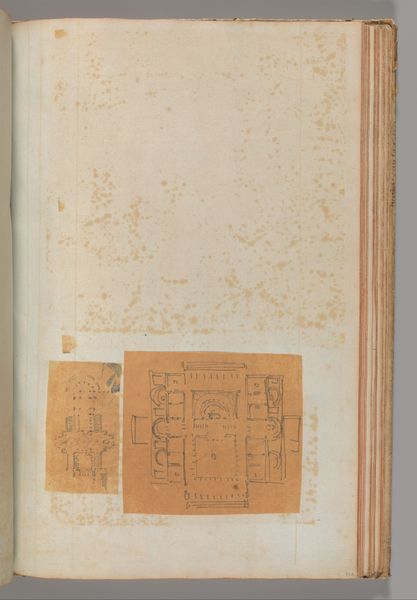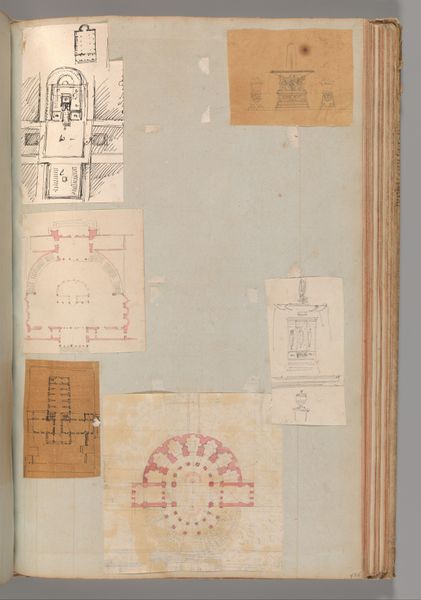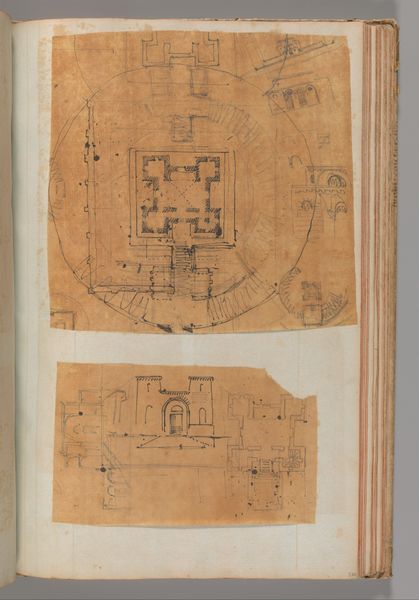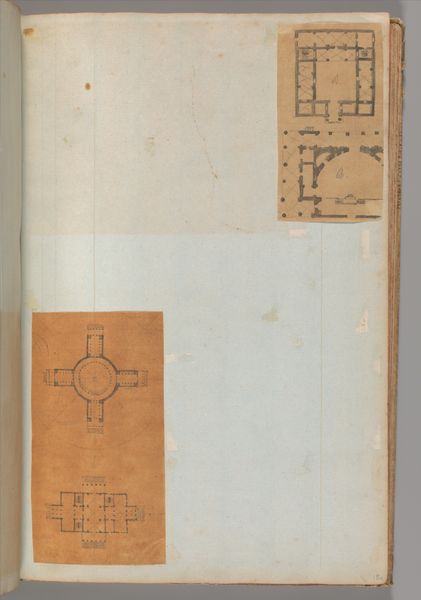
Page from a Scrapbook containing Drawings and Several Prints of Architecture, Interiors, Furniture and Other Objects 1795 - 1805
0:00
0:00
drawing, print, paper, architecture
#
drawing
# print
#
paper
#
architecture
Dimensions: 15 11/16 x 10 in. (39.8 x 25.4 cm)
Copyright: Public Domain
Editor: Here we have a page from a scrapbook, created between 1795 and 1805 by Charles Percier, comprising drawings and prints of architecture, interiors, furniture and other objects on paper. It looks like a collection of architectural sketches, neatly arranged on this single page. What catches your eye about this piece? Curator: Primarily, the rigorous arrangement and interplay between line and plane. Percier deploys line with remarkable economy, differentiating surface and void, structure and ornament, almost calligraphically. The drawings’ placement yields a visually dynamic surface – each element relating formally to its neighbors. Notice the tan paper – aged to perfection and juxtaposed with stark outlines; it underscores the textural richness and formal precision. Editor: I see what you mean. It's almost like a geometric dance on the page. Is the composition significant? Curator: Absolutely. The seemingly random assemblage is in fact governed by careful visual and proportional concerns, a subtle geometric scaffold holding the ensemble in delicate equilibrium. Note the interplay of horizontal and vertical axes across each image; Percier is masterfully manipulating architectural space as a function of compositional depth. Do you find any of the elements jarring or out of place? Editor: No, it seems remarkably cohesive considering it's a collection of different sketches. So, focusing on the formal aspects – the lines, the shapes, and the composition – that is key to understanding its beauty? Curator: Precisely. Percier transcends simple representation by manipulating the interplay of these compositional elements. We discern order and elegant constraint that reveals a profound appreciation for the expressive potential immanent to the architecture and page. It prompts us to ponder how design choices articulate particular aesthetic values. Editor: I appreciate that. I was so caught up in what was represented I failed to notice how carefully they were assembled to begin with! It’s a great way of emphasizing line and geometry. Curator: Indeed. Sometimes the structure itself constitutes the narrative.
Comments
No comments
Be the first to comment and join the conversation on the ultimate creative platform.
